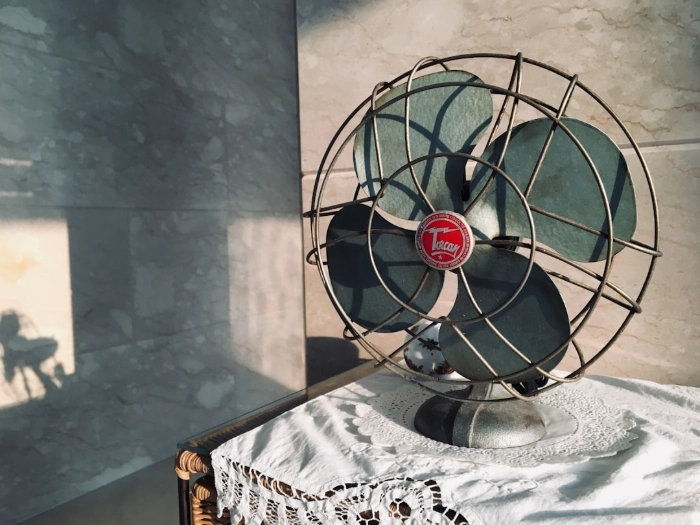Van Roof Vent Guide For Airflow and Cooling

Disclosure: Some of the links in this article may be affiliate links, which can provide compensation to me at no cost to you if you decide to purchase. This site is not intended to provide financial advice and is for entertainment only.
Living in a van means mastering airflow. One poorly ventilated night in humid heat will have you Googling "van roof vent" faster than you can say mildew. Whether you’re stealth camping in the city or roasting off-grid in the desert, a roof vent isn’t optional—it’s survival gear.
And if you’re traveling with pets, it's even more critical. Animals are vulnerable to heat and poor air quality, especially in tight spaces like a van. A proper roof vent can mean the difference between a safe space and a heat trap, particularly if you ever need to leave your pet in the rig briefly. Consistent airflow helps regulate temperature, reduce humidity, and keep your furry companions breathing easy.
Why a van roof vent matters more than you think
Without ventilation, your van becomes a greenhouse. Moisture builds up fast—from breathing, cooking, even boiling water for tea. That damp heat settles into fabrics and corners, breeding mold and bad smells. A good van roof vent pulls that humidity out and brings in fresh air, day or night.
Roof vents also reduce heat buildup. Pair one with a cracked window across from it, and you've got yourself a full-van breeze. It’s the most reliable passive cooling method short of installing an air conditioner—and way more power efficient.
Van airflow tips that actually work
Crossflow is key: Crack a window opposite the vent to create a wind tunnel.
Go low and high: Hot air rises, so exhaust through the roof and draw in cool air from lower down.
Fan direction matters: Some fans pull air in or push it out. Reversible ones let you control the flow depending on the season.
If you're chasing airflow because you're headed into the heat this winter, check out this guide on driving in Mexico. Even in December, Baja can roast your rig without ventilation.
Powering your van roof vent
Most roof fans need 12V power. That’s where your solar setup comes into play. I installed my MaxxFan the same week I upgraded my electrical system—because what’s the point of a fan if you can’t run it overnight?
If you’re building out your van or upgrading your rig’s power, check out this guide to building a solar kit for van life. It covers everything from panel wattage to battery bank sizing, and it’s written from the road.
And if you're lucky enough to also have AC but want to reduce the strain on your system, especially while moochdocking or using a generator, look into a soft start for your RV AC. Ventilation and AC don’t have to be enemies.
Choosing the right van roof vent
Not all roof vents are built the same. Here’s what to look for:
Reversible airflow: Push air out in summer, pull it in on cool nights.
Built-in rain cover: So you can leave it running during storms.
Thermostat or remote: For set-it-and-forget-it comfort.
Quiet operation: Because nobody wants a jet engine over their bed.
Top models like the MaxxFan Deluxe or the Fan-Tastic Vent are fan-favorites for a reason (pun intended). Reliable, quiet, and built to run 24/7 without frying your power bank.
DIY install tips
Measure twice, cut once: That’s your roof you’re slicing into.
Use butyl tape and lap sealant: Prevent leaks now, thank yourself later.
Plan around roof ribs and solar panels: Space is limited up there.
Watch three YouTube videos before touching a saw: Trust me.
If you’re not comfortable cutting into your roof, hire someone who is. A leak around your fan isn’t just annoying—it’s a threat to everything you own.
Final thoughts
Adding a van roof vent isn’t about luxury—it’s about livability. In hot, wet, or stale conditions, it becomes the MVP of your van build. Combined with smart airflow tactics, solid power support, and maybe a soft start system if you're fancy, it can keep your rig comfortable no matter the forecast.
Life on the road is sweaty enough. Don’t let stale air be the thing that breaks you.
Rolling Solo is my brutally honest guide to solo vanlife—how to prep, what to expect, and why it's still worth it even when everything leaks. Grab it here for $5 CAD.
Author: Royanne, full-time road dweller and the voice behind MissadVANture.
Disclosure: Some of the links in this article may be affiliate links, which can provide compensation to me at no cost to you if you decide to purchase. This site is not intended to provide financial advice and is for entertainment only.
